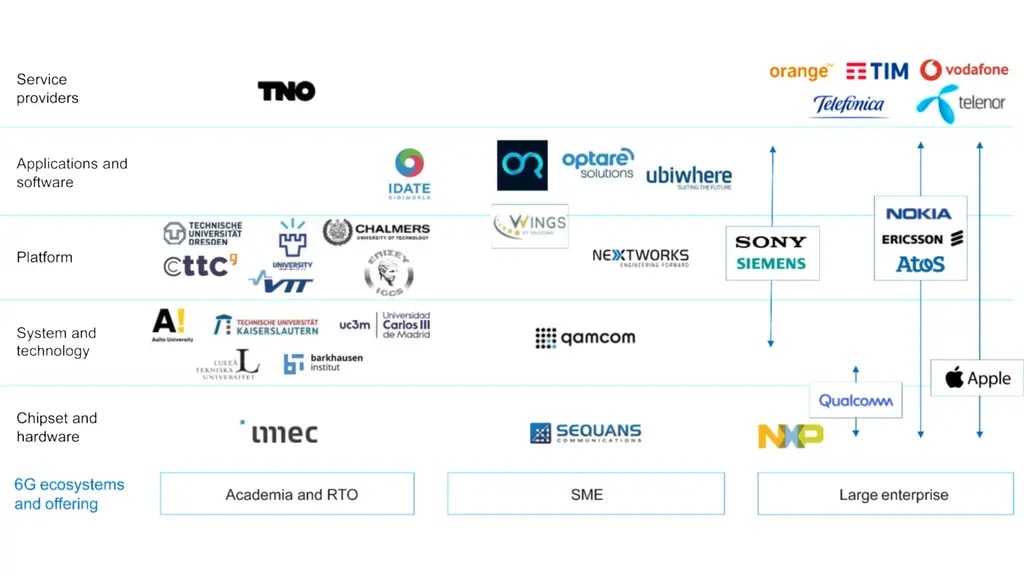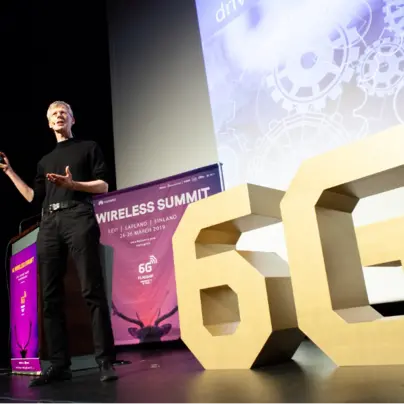On the road to 6G with the European 6G Flagship project Hexa-X-II

Although we are in the middle of the 5G era and 6G deployment is still many years away, now is the right time to lay the foundations for this critical future technology. For 5G, the work started just as 4G/LTE was rolling out with the initial foundations being laid out just over a decade ago. This is pretty much where we are today as we begin our collaborative work on Hexa-X-II, which will define the direction of the 6G standard over the next decade.
Hexa-X
The work on 6G has already begun. It started in 2021 with the first European level 6G Flagship Hexa-X. The project primarily captured the aspirations that European businesses, academia and other organizations had for the 6G network, as well as identifying the kinds of technologies that would be needed to realize the vision.
The Hexa-X project envisioned that 6G would be a key societal platform for building efficient and sustainable ways of living, ensuring trust, security and privacy, and creating economic prosperity and growth. By necessity, 6G will have to play a large role in addressing key issues in the 2030s. For instance, it will have to meet climate change goals of improved energy efficiency, as well as improving the efficiency and impact of other key social infrastructure. And, it will have to ensure full digital inclusion for Europeans, on the basis that by 2030, connectivity will likely be considered a fundamental human right. Given its central role in society, 6G would also have to foster trust and ensure privacy.
Hexa-X-II
Anticipating the conclusion of the Hexa-X project in June 2023, Nokia initiated a new project, which was developed together with our key partners and launched as Hexa-X-II. This second European level 6G Flagship project has started in January 2023 and will continue until June 2025. It will begin to build a technical system view of 6G, as well as continue to outline value for society, use cases and develop technical solutions to specific problems. The objective is to make recommendations to the ITU, ETSI and other standards organizations, which will define the goals and parameters of 6G, enable us to better understand timelines, and coordinate 6G contributions across the industry.
Figure 1. The road to 6G

Defining 6G together
The point of both the Hexa-X and the Hexa-X-II projects is not just to represent the goals and standards of the EU, but also to organize the global exchange of information and contribute to events and work done by other regions. The recommendations for the ITU, ETSI and others will set the foundation for the work of 3GPP. Hexa-X played a critical role in setting the global vision and arriving at a wish list of features and attributes. Hexa-X-II will be critical in paring down the wish list and beginning to establish what is practically achievable. This will be done with a view to what serves society and end users best.
The interaction within Hexa-X-II and the interaction at global events facilitated by Hexa-X and Hexa-X-II are striving to move the views of different stakeholders towards better alignment and reconcile differences. This should create a better pre-standardization consensus and be reflected in the joint and individual contributions to 3GPP.
Figure 2. Hexa-X-II partners

Hexa-X-II first steps
Hexa-X-II welcomes new participants, growing from 25 partners in the original project to 44, with Nokia and Ericsson again jointly leading the venture as the overall project lead and technical manager, respectively. Some of the new participants include device and chipset vendors, prestigious research institutes and universities, a wider range of telecom operators, as well as enterprises focused on use cases relevant for the 2030s. Especially with the input of the latter participants as well as end-user stakeholders, Hexa-X-II will re-visit the use cases for 6G identified in Hexa-X, adding new use cases where necessary.
The project will also aim to build trust by including the wider public, thereby defining issues ahead of time and building a more sustainable consensus on solutions.
The focus areas for the systemization of 6G will include overall architecture, radio access, future devices, smart network management and flexible infrastructure. Overall, sustainability will be central, including also the economic and social aspects in addition to energy efficiency.
Paving the way for 6G
When we look back at the decade-long process that brought us 5G, we can see that we are entering a critical period in establishing the 6G standards. Hexa-X-II is all about cooperation and attempting to arrive at the standards-setting process with as many ducks in a row as possible. Alignment is the goal of the joint activities and the work by companies, universities, end-user stakeholders over the next two and a half years. Through cooperation and open collaboration, we will not only streamline the process, but produce a better standard that will benefit all participants, especially, the public users of 6G in the future.
Written by Peter Vetter and Magnus Frodigh
